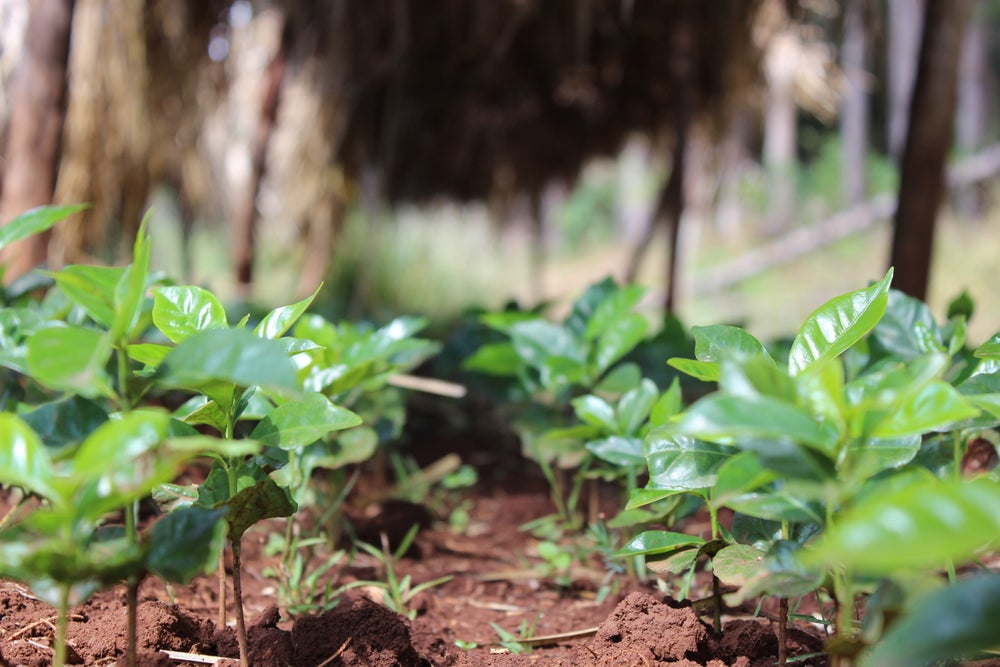About This Coffee
Bensa Shantaweni washing station is located at 1,860 to 1,990 meters above sea level in Benesa, Sidamo. Farmers delivering to Bensa Shantaweni cultivate local landraces and JARC varieties on small farms, typically less than 5 hectares each.
Cultivation
Many would say that the strength of Sidamo coffees lie in the regions’ diversity of profiles. The many microclimates and varying soil types lead to striking differences from town to town. But across all Sidamo coffees is a profound complexity that many attribute to the diversity of local landrace varieties. Varieties can differ from town to town and even farm to farm where each farmer may have more than one unique variety seldom or never found outside their plot.
When all these different varieties are blended at the local cooperative, the resulting blend expresses the complexity of the plant genetics in the area.
Farming methods in Sidamo remain largely traditional. Sidamo farmers typically intercrop their coffee plants with other food crops. This method is common among smallholders because it maximizes land use and provides food for their families.
In addition to remaining traditionally intercropped, most farms are also traditional and organic-by-default. Farmers in Sidamo typically use very few—if any—fertilizers or pesticides. Most farm work is done manually and very few tasks are mechanized, even during processing.
Harvest & Post-Harvest
Farmers selectively handpick ripe cherry and deliver it to the station. At intake, employees visually inspect cherry and accept only fully ripe cherry for anaerobic fermentation. Selected cherry is tightly packed in GrainPro bags and sealed shut. Cherry ferments anaerobically (without oxygen) for 18 to 24 hours.
After fermentation, cherry is carefully removed from bags and laid to dry in direct sunlight on raised beds. Workers turn cherry frequently to promote even drying. It takes approximately 2 to 3 weeks for cherry to dry.
About Anaerobic Fermentation
As more producers and washing stations enter specialty coffee, unique processing methods are a new way to stand out among the increasing number of sellers. One of those newer processing methods is anaerobic fermentation.
Anaerobic fermentation occurs in sealed containers. The seal means the microbes fueling fermentation quickly consume all the oxygen in the container. At that point, the environment becomes anaerobic (without oxygen). In this new environment, the microbes that typically breathe oxygen have a harder time surviving, and those that flourish on carbon dioxide (the typical byproduct of oxygen-breathing microbes) are able to dominate fermentation.
Microbes are immensely diverse and have the potential to produce a wide array of flavors in coffees. Aerobic (oxygen-breathing) microbes produce different flavor outcomes than anaerobic ones, so we have the potential to produce vastly different flavors simply by changing the available resources for microbes.
Ethiopia Grade 1
Grades in Ethiopia depend on visual inspection for defects and on cup quality. Grade 1 is considered the highest quality coffee. Grade 1 and 2 are considered specialty coffee, grades 3-9 are classified as commercial coffee. Grade 1 is free of cup faults and taints and has zero quakers.
About Sidamo
The Sidamo region of Southern Ethiopia holds the distinction as one of the three trademarked coffee regions of Ethiopia. Alongside Harrar and Yirgacheffe, Sidamo holds a Designation of Origin for coffee grown in the region. That's unsurprising when you consider the high altitudes of 1,550 to 2,200 meters above sea level, plentiful rainfall and fertile soil that makes the coffee grown in this region so remarkable.
The Sidamo region is named after the indigenous ethnic group, the Sidama, who call the region their home. On Sidamo’s Eastern border lies the large regions of Arsi and Bale while to the West, Sidamo is bordered by Gamogofa.
Sidamo lies in the path of the Great Rift Valley and thanks to this, the countryside of Sidamo is lush and green. There are several freshwater lakes that provide drinking and agricultural water and account for the densely populated nature of this region.
The Great Rift Valley spans from the northernmost tip of Ethiopia across Kenya and all the way to the southernmost region of Tanzania. It is home to some of the oldest-known fossils of humankind, which suggests its importance in the early development of humanity.
Coffee in Ethiopia
While Ethiopia is famous as coffee’s birthplace, today it remains a specialty coffee industry darling for its incredible variety of flavors. While full traceability has been difficult in recent history, new regulations have made direct purchasing possible. We’re partnering directly with farmers to help them produce top quality specialty lots that are now completely traceable, adding value for farmers and roasters, alike.
The exceptional quality of Ethiopian coffee is due to a combination of factors. The genetic diversity of coffee varieties means that we find a diversity of flavor, even between (or within) farms with similar growing conditions and processing. In addition to varieties, processing methods also contribute to end quality. The final key ingredients for excellent coffee in Ethiopia are the producing traditions that have created the genetic diversity, processing infrastructure and great coffee we enjoy today.
Most producers in Ethiopia are smallholders, and the majority continue to cultivate coffee using traditional methods. As a result, most coffee is grown with no chemical fertilizer or pesticide use. Coffee is almost entirely cultivated, harvested and dried using manual systems.

